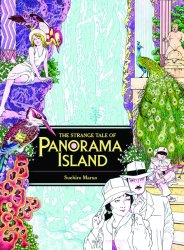The Strange Tale of Panorama Island by Suehiro Maruo
by Johannes Schonherr, March 2014
Suehiro Maruo is one of Japan’s leading ero-guro manga artists. Only a few of his works have been translated into English but those have found an international cult fan audience.
Born in Nagasaki in 1956, Maruo moved to Tokyo in the early 1970s. His first manga were rejected by the publishers – they were way too grotesque for the publishers at the time.
Things radically changed in the early 1980s however. Punk had arrived in Japan and a new generation of publishers sought out the strange, outlandish and bizarre.
In 1982, Maruo published his first anthology of short works, The Rose-Colored Monster (Barairo no kaibutsu) which also featured the nonsensical ‘German’ title Das Ungetum der Rosenstck on its cover.
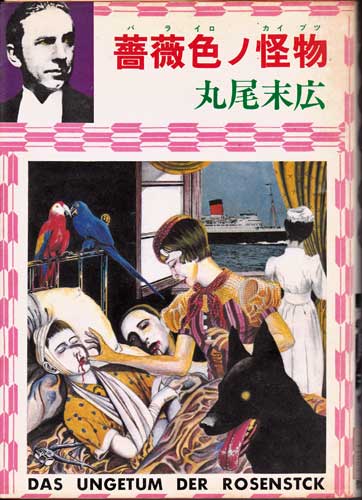
The Rose-Colored Monster
The Rose-Colored Monster clearly laid out Maruo’s interests, obsessions and the style he would pursue in his later works: a strong focus on the Japan of the Taisho and early Showa era, a keen interest in German expressionism and more broadly, in German art and cinema of the 1920’s (Doctor Caligari, Nosferatu, Marlene Dietrich are referenced throughout), a love for bizarre characters, often featured as members of freak shows circuses, and a general interest in all kinds of kinky and bizarre stories, all drawn in great detail.
In 1984, Maruo published his most famous graphic novel so far, Shojo Tsubaki. It tells the story of an orphan girl in 1920s Tokyo who finds refuge, sort of, in a traveling freak show. The book is an emotional roller coaster ride rapidly charging from kawaii (cute) to nasty, from small-girl happiness to outright terror, from bizarre violence to hilarious camp kitsch. It’s an unbelievable but very thrilling read.
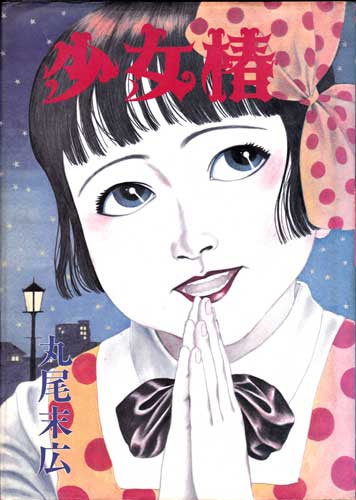
Shojo Tsubaki
In 1993, Blast Books in New York published Shojo Tsubaki in English under the title Mr. Arashi’s Amazing Freak Show.
In Japan in 1992, animation director Hiroshi Harada turned Shojo Tsubaki into an animated film. The film was not shown at regular movie theaters but only at special freak show events organized by Harada himself. See here a detailed review of the film and the strange events where it was shown: www.midnighteye.com
New York avant-garde musician John Zorn created controversy when he used illustrations by Maruo for the albums of his band Naked City in the early 1990s.
In 2001, Creation Books in London published an anthology of Maruo’s shorter works in the nightmarishly hallucinating Ultra-Gash Inferno.
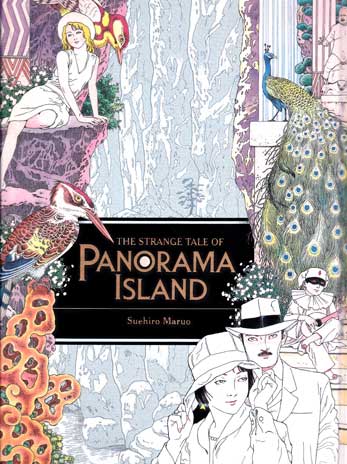
The Strange Tale of Panorama Island
The Strange Tale of Panorama Island is Maruo’s most recent work available in English. The plot: Hitomi Hirosuke is a failed writer barely scraping by in Tokyo in the late Taisho era (1912-1926). His scribblings hardly pay his rent and his publisher is less than thrilled by his latest manuscript, The Tale of RA.
In the manuscript, Hitomi feverishly fantasizes about an island paradise he would want to create, replete with fantastic European designs and infused with highly charged eroticism.
The publisher isn’t buying. But he does provide Hitomi one day with the news that his university classmate Genzaburo Komoda had just died.
Hitomi, the poor boardinghouse student and Genzaburo, the scion of an extremely wealthy family from Kishu (in today’s Wakayama Prefecture) were extreme look a likes at school. Doppelgangers.
A plan quickly shapes up in Hitomi’s head – if he would be able to take over Genzaburo’s life, he could realize his fantasy of the paradise island. He would just have to fake his own death – and to convincingly pretend that he would be Genzaburo by claiming that Genzaburo had been buried while being in a catatonic state but eventually made his way out of the grave again.
I don’t want to reveal more of the story unfolding here except for saying that Hitomi did build a gorgeous, surrealistically fantastic island paradise and populated it with a mix of weird freak show performers and delicious nubile maidens.
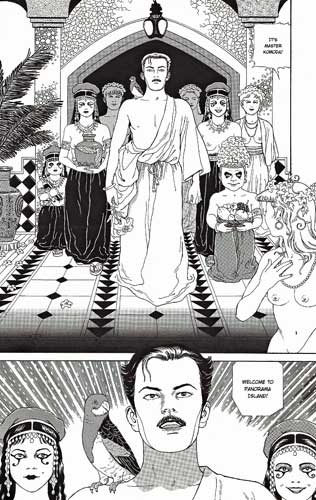
Edogawa Rampo
Suehiro Maruo’s graphic novel is an adaptation of a novella of the same title written by Edogawa Rampo (1894 – 1965), one of the leading Japanese mystery writers of the first half of the 20th century. Edogawa Rampo was the pen name of Taro Hirai, it was a name Hirai chose in reverence for his favored Western author Edgar Allan Poe. When pronounced in Japanese, Edgar Allan Poe and Edogawa Rampo sound very similar.
Rampo had a deep knowledge of American and European literature and it showed in his writing – as well as a tendency to graphically depict deviant sexuality, often in connection with bizarre forms of violence. The latter made him the godfather of the Japanese genre of ero-guro – the erotic grotesque.
Maruo’s Adaptation
The Japanese original of Maruo’s take on Panorama Island was first published by Enterbrain in 2008 under the title Panorama-to Kitan, the original title of Rampo’s novella.
In 2013, Last Gasp Books in San Francisco published the English version. It is a lavish hardcover 274 – page book in a format size that allows a close study of Maruo’s detailed-oriented drawings. Look closely at the images – you will find a lot of surprising little details.
Panorama Island is much less violent than Maruo’s previous books and the story is told in a straightforward yet very gripping way, leading to an unavoidable outcome. Still, it’s strictly Adults Only.
Suehiro Maruo books on Amazon.com
The Strange Tale of Panorama Island
The Rose-Colored Monster (in Japanese, reprint)
Mr. Arashi’s Amazing Freakshow
Ultra-Gash Inferno (out of print copies only)
DVD:
Midori (Hiroshi Harada’s Shojo Tsubaki animation film with English subtitles)
